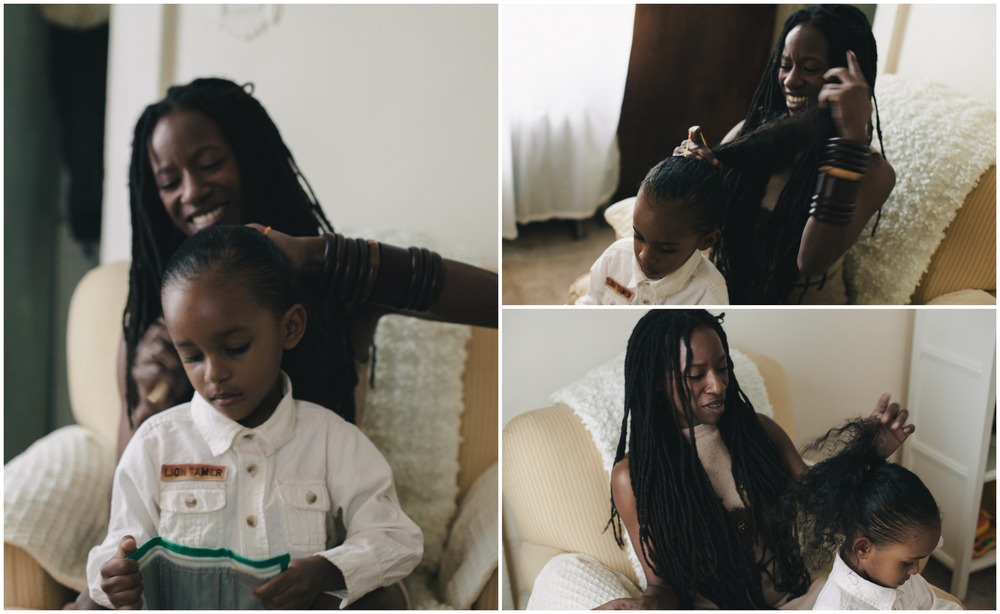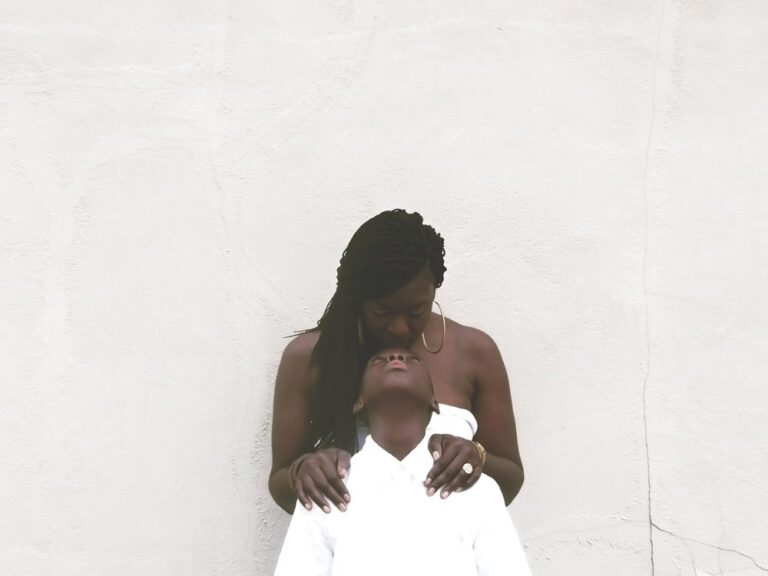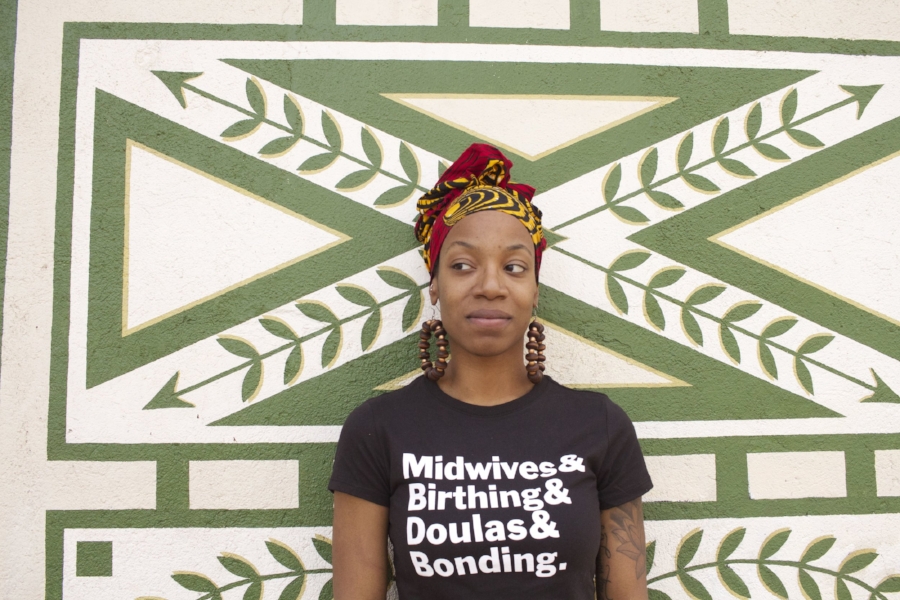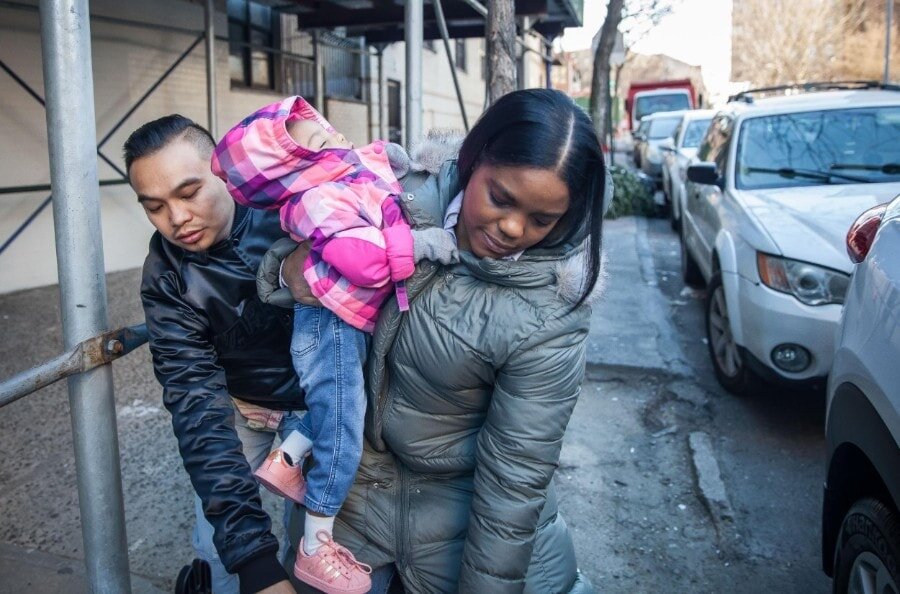During our shoot with choreographer Makeda Thomas, we couldn’t stop cooing over her son Shiloh’s gorgeous head of hair. But people’s reactions to her son’s curls created some issues—and an early opportunity to discuss gender identity. Makeda tells us the story in her own words.
In general, people do not look at my son—they just see his hair. He is often mistaken for a girl, and he constantly hears me correcting people. Understandably, for him, his hair is the reason for the confusion.
It all started one spring afternoon at our home in Brooklyn. I was in the garden, and my son, Shiloh, was playing in the yard. Our neighbor said through the fence, “Look at all that hair. You look like a girl!” Shiloh looked up at me. I could tell he was watching for what I would do, and his little brain was also trying to digest the statement. I was annoyed with my neighbor and told him it was not okay to give a 3 year old a gender complex.
Almost immediately, this statement turned our mornings into a back-and-forth routine. Shiloh insisted I comb his hair up in [a ponytail] “like a boy” and not down and reaching his back “like a girl.” I combed his hair up while telling him that he is a boy because he says he is, not because of his hair. We’d go back and forth every morning, [and] combing Shiloh’s hair became a regular morning fuss.
I asked, “Would you like to loc it like mine, [and like] grandpa and grandma’s?”
He replied, “No, it’ll still be long.”

We went online. I showed him images of little boys with long hair. He was not having it. The initial suggestion to cut his hair was mine, but he said no.
One morning, when I tried combing his hair in the shower, he got hysterical and would not let me comb it. At that point, I told him, “Shiloh, you need to make a decision. It is your hair, and your decision.”
Recently he asked me to cut his hair. I [had] secretly wished he would love his long, beautiful hair and let me loc it someday. I grew up in a Rasta family, [so] locing my hair was born out of my cultural identity; it was very natural for me. My father was a Rastaman [who] had dreadlocks for most of his life. It was a little rough for me to cut Shiloh’s hair. Coming from a Rasta family, [cutting] one’s hair was close to taboo, and it was strange to put a pair of scissors to Shiloh’s hair. I had to check that reaction for myself. I did not know how much [value] I had put into hair, and I wanted to free Shiloh from all of that. I was shaking with the scissors in my hand while laughing at myself for shaking and thinking too much about it.
I cut Shiloh hair off in three snips [and] in three snips, it was all gone. We packed it up and put it in the compost.
Our gender identity journey was an opportunity for Shiloh to learn how to deal with similar situations. He is only 3 years old, but he has been able to correct people about who he is and how he identifies. I am very proud of him in those moments, because he can speak up for himself.
We love his haircut, and he has not been mistaken for a girl [since]. Somehow, it still manages to be long. Shiloh wants to be recognized as a boy, even though being a “boy” to him means loving all things Transformers, guns, and the color pink—a whole other set of conversations.


















